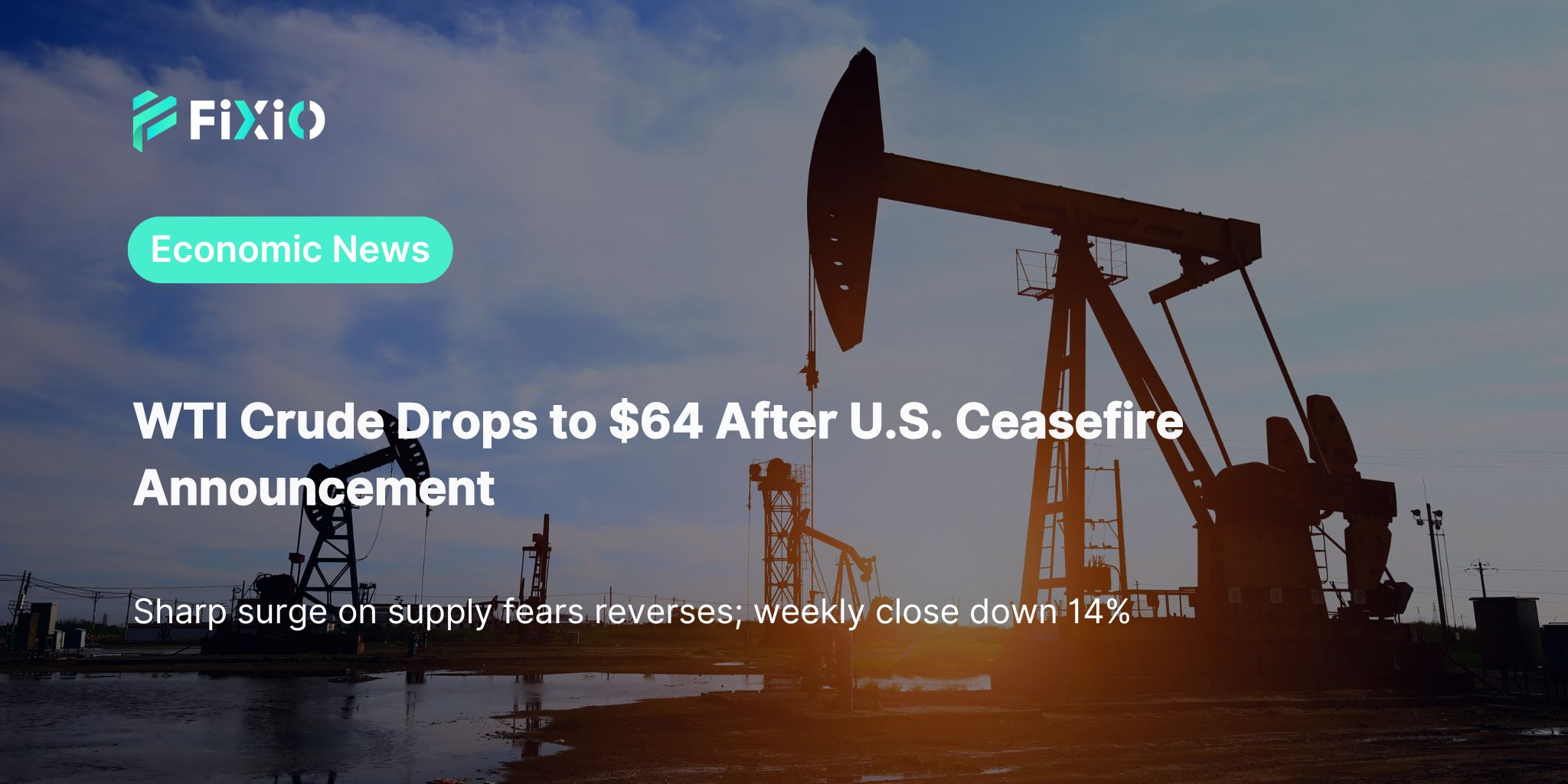
On June 23, 2025, at the New York oil market, WTI crude futures experienced sharp fluctuations.
The U.S. conducted military strikes on three Iranian nuclear facilities, escalating tensions in the Middle East and raising concerns about oil supply, pushing prices to the mid-$78 range per barrel.
However, a social media post from former President Trump stating “Keep oil prices down. Don’t fall into the enemy’s trap,” along with a directive to the Energy Department to “drill more,” raised expectations of increased supply and triggered a downward shift in oil prices.
Meanwhile, Iran reportedly retaliated by attacking a U.S. military base in Qatar, but the limited scale of the strike and the absence of casualties led markets to believe the impact on oil supply would be minimal.
This report helped stabilize investor sentiment, resulting in a wave of sell orders. Following Trump’s announcement of a ceasefire agreement between Israel and Iran on social media, crude prices fell sharply, temporarily reaching the $64 range per barrel.
During the 1973 oil crisis, the Yom Kippur War in the Middle East led OPEC to impose an oil embargo on countries supporting Israel. Crude prices skyrocketed from $3 to over $40 per barrel, triggering a global economic downturn.
However, since the 1980s, even when conflicts erupt in the Middle East, oil price surges have often been short-lived, with limited impact on the global economy.
Similarly, in this case, markets are predominantly viewing the situation as short-term volatility, suggesting that investor reactions are temporary responses to risk events.
The future of the oil market remains heavily influenced by geopolitical risks. In particular, attention is focused on Iran’s next move and the U.S. response.
Any actual disruption or blockade of the Strait of Hormuz, through which about 20% of the world’s oil supply passes, would almost certainly drive prices higher. This could also impact equity and currency markets globally.
The ceasefire announcement by former President Trump brought temporary calm to the oil market, but underlying tensions remain unresolved. While prices may stabilize in the short term, unexpected military actions still pose significant risks for volatility.
Investors are advised to stay alert, maintain flexible strategies, and actively monitor developments based on historical precedents.
For the latest market trends and technical analysis, visit the FIXIO Blog.
This article analyzes the sharp drop in crude oil futures to $64 following U.S. military action and a ceasefire announcement. It highlights how geopolitical risks and market sentiment shaped the price swings, with historical context from the 1973 oil crisis.
Superior trade execution & trading conditions with the NDD method.

The online FX industry provides a platform for investors worldwide to engage in the buying and selling.

Subscribe to our daily newsletter and get the best forex trading information and markets status updates
Trade within minutes!
Comment (0)